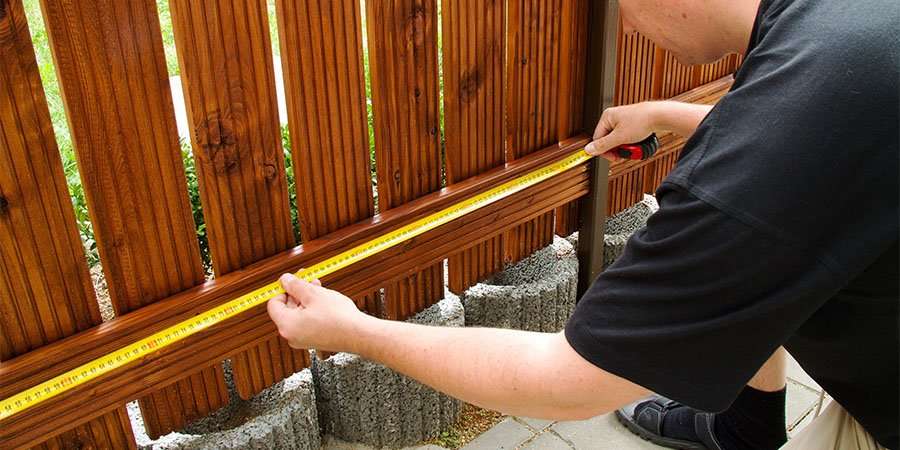All Categories
Featured

Choosing the appropriate fencing product for your building is a choice that stabilizes aesthetic appeals, functionality, and spending plan. Amongst one of the most popular alternatives, timber, plastic, and light weight aluminum each deal one-of-a-kind advantages and disadvantages. Understanding these can aid you make an informed choice that lines up with your demands. Here's a break down of the benefits and drawbacks of these 3 common fencing materials.
Timber Secure Fencing. Timber secure fencing has been a timeless choice for homeowners due to its natural appeal and versatility.
Pros:. Aesthetic Charm: Timber offers a warm and timeless appearance that matches a selection of architectural designs. Adjustable: It can be painted, tarnished, or cut right into unique styles to suit individual preferences. Cost-efficient: Initially, timber fence can be an affordable choice compared to other materials. Eco-Friendly: Timber is a renewable energy and can be sustainably sourced. Disadvantages:. High Upkeep: Timber requires regular securing, staining, or paint to avoid rot, insect damage, and weathering. Toughness Problems: Without correct treatment, timber can warp, crack, or degeneration in time, specifically in locations with high moisture. Much shorter Life-span: A timber fencing typically lasts 10-20 years, depending on the kind of wood and level of maintenance. Wood is suitable for those who value a conventional look and want to devote to its upkeep.
Plastic Fence. Plastic is a modern-day, low-maintenance secure fencing option that has expanded in popularity over the last few years.

Pros:. Low Upkeep: Plastic does not require painting, discoloration, or sealing and can be conveniently cleaned with soap and water. Climate Resistant: It withstands harsh weather condition conditions without rotting, rusting, or bending. Long-Lasting: Vinyl fences can last 20-30 years with marginal maintenance. Selection of Styles: Offered in numerous colors, styles, and textures, some plastic alternatives resemble the appearance of timber. Cons:. Higher Upfront Price: Plastic fence can be extra expensive initially contrasted to wood. Brittleness in Cold Weather condition: In severe cold, vinyl might crack or end up being brittle. Limited Repairs: Individual panels can be difficult to change, needing careful matching to the existing fencing. Plastic is ideal matched for property owners looking for a durable, low-maintenance service with contemporary aesthetics.
Aluminum Secure Fencing. Aluminum fencing is a long lasting and lightweight alternative, often selected for its modern look and flexibility.
Pros:. Rust-Resistant: Aluminum does not corrosion, making it an exceptional option for moist or damp environments. Reduced Maintenance: Requires marginal maintenance and is easy to clean. Resilient: While light-weight, light weight aluminum is solid sufficient to hold up against several environmental problems. Long Life-span: Can last a number of years without considerable wear or damage. Range of Styles: Provides a streamlined and stylish look, often utilized for attractive or ornamental functions. Disadvantages:. Greater Cost: The initial financial investment for aluminum secure fencing is higher than timber or vinyl. Less Privacy: Light weight aluminum fences are typically created with open pickets, making them less reliable for personal privacy. Susceptible to Dents: Although sturdy, light weight aluminum can be nicked by solid impacts. Light weight aluminum is optimal for those looking for a fashionable, durable alternative that requires very little treatment.
Making the Right Selection. Each secure fencing material-- vinyl, wood, and light weight aluminum-- uses distinctive advantages and drawbacks. Your choice ought to rely on your certain concerns, such as spending plan, upkeep choices, environment, and aesthetic objectives:
If you enjoy a conventional appearance and do not mind regular maintenance,Choose wood. Decide for vinyl if you desire a low-maintenance, weather-resistant fence with contemporary allure. Opt for aluminum if you focus on sturdiness, rust resistance, and a sleek design. By weighing these cons and pros, you can select a fence material that improves your residential or commercial property while satisfying your functional needs.
Latest Posts
Smooth Aluminum Seamless Gutters: The Smart Choice for Your Home
Published May 26, 25
1 min read
Join WyHy FCU – Top Benefits for Your Money Goals
Published May 26, 25
1 min read
Learn Why Chicago Drivers Prefer Montclare Auto Repair for Reliable Service and Huge Savings
Published May 25, 25
1 min read
More
Latest Posts
Smooth Aluminum Seamless Gutters: The Smart Choice for Your Home
Published May 26, 25
1 min read
Join WyHy FCU – Top Benefits for Your Money Goals
Published May 26, 25
1 min read
Learn Why Chicago Drivers Prefer Montclare Auto Repair for Reliable Service and Huge Savings
Published May 25, 25
1 min read